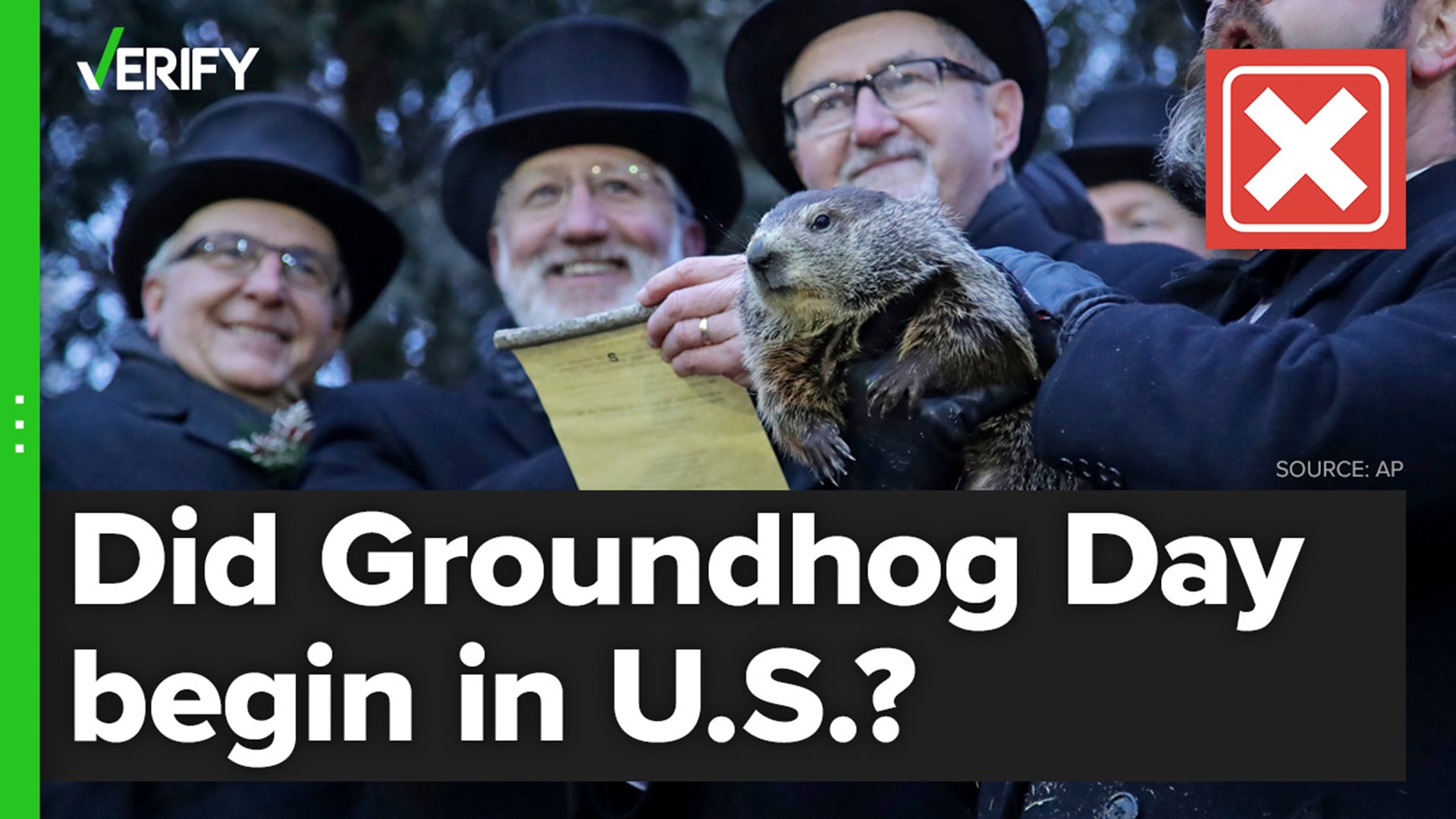Every year on Feb. 2, Punxsutawney Phil emerges from the ground to tell the American public if there will be six more weeks of winter or if spring will come early. The legend goes: If he sees his shadow and retreats to his burrow, cold weather will persist into March. If he doesn’t see his shadow, then spring will begin.
The holiday, called Groundhog Day, is observed in the U.S. and Canada. But is the practice of predicting weather with animals uniquely American?
THE QUESTION
Did the weather-predicting tradition of Groundhog Day originate in America?
THE SOURCES
Beltane Fire Society, a Scottish organization that seeks to educate the public on Celtic festivals
THE ANSWER
No, the weather-predicting tradition of Groundhog Day did not originate in America — its roots can be traced back to pre-Christian Europe.
WHAT WE FOUND
“Groundhog Day” is currently a holiday unique to the United States and Canada, but it stems from European holidays held at the beginning of February that included weather predictions as part of their traditions.
The Library of Congress traces Groundhog Day back to a pre-Christian Celtic celebration called Imbolc that took place between the winter solstice and the spring equinox. In the Gaelic cultures of Ireland and Scotland, a mythological hag or goddess associated with storms, winter and the creation of weather named Cailleach would spend Imbolc gathering firewood for the remainder of winter, according to the Beltane Fire Society, a Scottish organization that seeks to educate the public on Celtic festivals. If Cailleach intended to make winter last a while longer, she would make the weather on Imbolc bright and sunny so she could collect plenty of firewood. But if there was foul weather on Imbolc, that meant Cailleach was asleep and winter was almost over.
Imbolc later morphed into a holiday called “Candlemas” in the Christian calendar, the Library of Congress says. Several old Candlemas rhymes include mentions of weather prognosis, all of which equate a bright, sunshiney Candlemas day to a longer winter.
The West Virginia Division of Natural Resources says Germans added to this tradition by using a badger to predict the weather — the National Weather Service’s Philadelphia office says it was a badger or “sacred bear” — but the rules mirrored those observed for the groundhog today: If it was sunny, the badger would cast a shadow and that would indicate six more weeks of winter.
Groundhogs, a species native to North America, became the animal of choice when Germans immigrated to western Pennsylvania. The new, Americanized tradition remained alive until the first official trek to today’s Groundhog Day location at Gobbler’s Knob in 1887, according to the Punxsutawney Groundhog Club.
While the American Groundhog Day might be the most well-known of today’s weather-predicting holidays, it’s not the only one that remains. In Serbia, for example, bears predict the end of winter on a Feb. 15 holiday called Sretenje. On the German Seven Sleepers’ Day in late June, the weather that day is supposed to predict the average weather for the next seven weeks. In the United Kingdom, St. Swithin Day on July 15 is supposed to signal 40 straight days of rain or sunshine depending on the weather that day.
Finally, Imbolc is set to become a publicly observed holiday in Ireland once again. The Irish government announced in January it would be observed on the first Monday of February beginning in 2023. The Irish government made no mention of any weather predictions with the return of the holiday, not even by hag, badger or groundhog.
More from VERIFY: No, not everyone celebrates the start of the new year on Jan. 1

